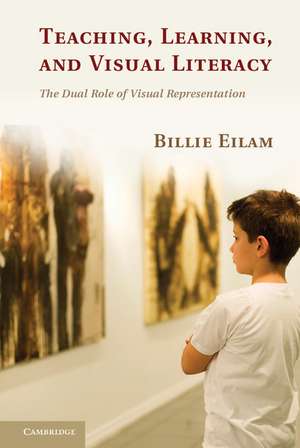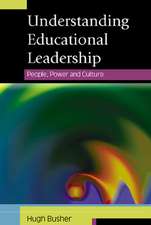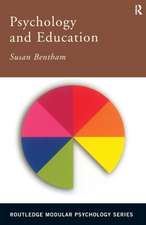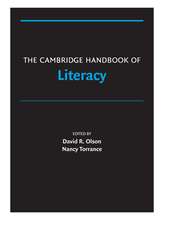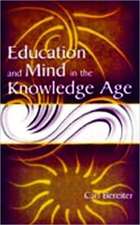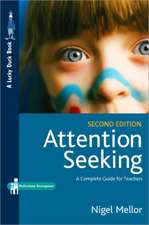Teaching, Learning, and Visual Literacy: The Dual Role of Visual Representation
Autor Billie Eilamen Limba Engleză Hardback – 26 aug 2012
Preț: 543.84 lei
Preț vechi: 611.06 lei
-11% Nou
Puncte Express: 816
Preț estimativ în valută:
104.06€ • 108.94$ • 86.11£
104.06€ • 108.94$ • 86.11£
Carte tipărită la comandă
Livrare economică 07-21 aprilie
Preluare comenzi: 021 569.72.76
Specificații
ISBN-13: 9780521119825
ISBN-10: 0521119820
Pagini: 348
Ilustrații: 30 b/w illus. 4 tables
Dimensiuni: 150 x 229 x 28 mm
Greutate: 0.68 kg
Ediția:New.
Editura: Cambridge University Press
Colecția Cambridge University Press
Locul publicării:New York, United States
ISBN-10: 0521119820
Pagini: 348
Ilustrații: 30 b/w illus. 4 tables
Dimensiuni: 150 x 229 x 28 mm
Greutate: 0.68 kg
Ediția:New.
Editura: Cambridge University Press
Colecția Cambridge University Press
Locul publicării:New York, United States
Cuprins
Preface. Part I. Introduction: 1. Dualities of visual literacy: the double-faced Janus image; Part II. The State of the Art in Visual Literacy among Teachers and Students in Schools and within Today's Visual Culture: 2. A day in teachers' work: qualitative research and case illustrations on teaching and learning with VRs in today's schools; 3. Students' ideas about VRs over development; 4. Practising students' ideas about VRs and their uses; 5. The emergence of visual literacy and the global visual culture; Part III. Teachers' Visual Literacy Programs: Rationales, Lacunae, and Planning: 6. The rationale for implementing explicit visual education for teachers; 7. Integration of VRs into teacher education programs: past, present, and future; Part IV. The Nature of VRs and their Impact on Learning: 8. Some aspects of human perception that teachers should understand; 9. Symbolic language: signs and sign types; 10. Visual representations: types and characteristics; 11. Learning with representations and multimedia: affordances and constraints; Part V. The Invisibility of VRs in Curriculum Materials: 12. VRs' influences on curricular concepts and theories; 13. A comprehensive schema for analyzing MRCMs; Part VI. A VR Curriculum Framework for Teacher Education: 14. Innovations in teacher education; 15. Proposed curriculum framework; 16. Possible exercises and tasks; Part VII. Epilogue: 17. An image of the future: the visually literate teacher.
Notă biografică
Descriere
This book examines the importance of visual literacy education, offering strategies for improving the visual analytic abilities of teachers and students.
